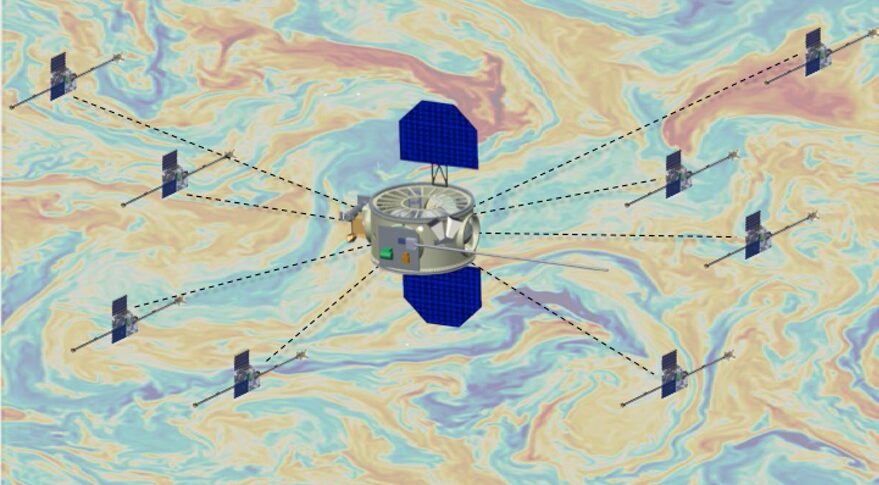New NASA mission with Graz participation
NASA selected two new science missions a few days ago: MUlti-slit Solar Explorer (MUSE) and HelioSwarm. Both missions will help to better understand the dynamics of the Sun and the interaction between solar wind and Earth, and provide important information about physical phenomena in the solar system. The Graz Institute for Space Research (IWF) of the Austrian Academy of Sciences is involved in HelioSwarm.
Turbulent solar wind
The outermost atmospheric layer of the Sun, the heliosphere, extends far into our solar system like a bubble. The solar wind spreads out in it, a constant stream of charged particles that generates complex phenomena in the Earth's environment. These are summarised under the term "space weather" and not only influence the functioning of satellites and communication signals in space , but also endanger astronauts.
"HelioSwarm will reveal the physical processes responsible for heating charged particles in interplanetary space," explains IMF researcher Owen Roberts, who worked on the mission concept for HelioSwarm and is part of the science team. "When we measure the temperature of the solar wind, it shows a strange behaviour: It is much hotter than we would expect based on previously known physical processes for an expanding gas," Roberts continues.
The solar wind consists of turbulent magnetic waves, vortices and other structures that heat up the plasma. It is a challenge to study these complex phenomena with just a single spacecraft. HelioSwarm is designed to explore magnetic field fluctuations and their effects on plasma heating and acceleration. "At IMF, we are developing a wave analysis method that combines data from all nine satellites. This method can be used to determine what types of waves there are, in which directions they move and, most importantly, how they heat up and accelerate particles.
HelioSwarm in detail
HelioSwarm is a constellation or "swarm" of nine spacecraft that will make multi-point measurements in space. The mission is led by the University of New Hampshire (UNH). It will focus on studying fluctuations in the Earth's magnetic field and movements of the solar wind, known as solar wind turbulence. To study this turbulence, simultaneous measurements from different points in space are required.
HelioSwarm consists of a main satellite that serves as a hub and maintains radio contact with another eight small satellites (see figure). The orbit of the nine satellites is designed so that they can change their orientation and distances from each other. "This engineering innovation provides a unique opportunity to study turbulence and its evolution in the solar wind," says Roberts.
HelioSwarm, along with MUSE, was selected from five project proposals as NASA's next Medium-Class Explorer (MIDEX) missions.
From single satellite to spacecraft swarm
Solar wind turbulence helps keep the local solar environment hot in near-Earth space, but the reason is not known. HelioSwarm hopes to unravel this mystery and find out why the solar wind does not cool down. Many space scientists have been waiting for this mission for a long time, including Rumi Nakamura, head of the Space Plasma Physics Research Group at IMF: "It's incredible how science has developed in the last few decades." The beginnings of HelioSwarm date back to the early 1980s. However, such a mission has only recently become technically feasible. "Within a few decades, we have evolved from single satellites to tetrahedral constellations like Cluster and MMS, and now we are sending out whole swarms of spacecraft that will make revolutionary discoveries," Nakamura is convinced.
According to IWF Director Christiane Helling, missions like HelioSwarm "make fundamental contributions to the understanding of the turbulence phenomenon, for which there is still no generally valid description".
HelioSwarm is expected to usher in a new era of space plasma physics. Several proposals for future swarm missions are in preparation to be submitted to space agencies in Europe, the USA and Asia.
Contact
Doz. Rumi Nakamura
T +43 316 4120-573
M +43 664 4032672
rumi.nakamura@oeaw.ac.at
Dr. Owen Wyn Roberts
T +43 316 4120-636
owen.roberts@oeaw.ac.at

